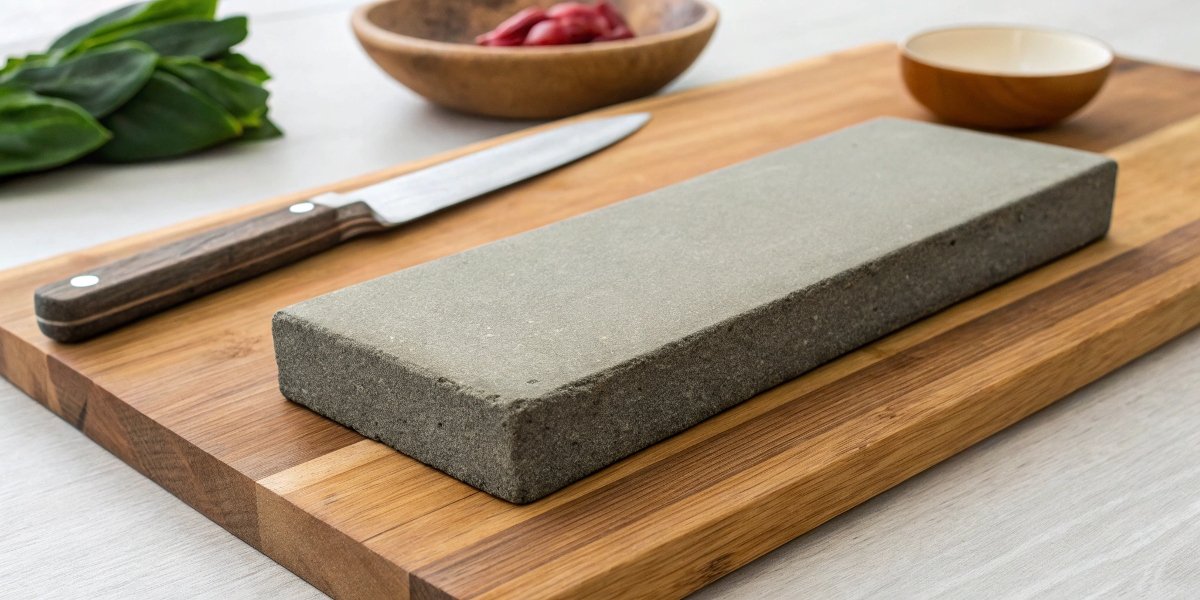
A dull knife is frustrating and can be unsafe. But with so many sharpening stones available, choosing the right one feels overwhelming. I will help you find the perfect match.
The best sharpening stone depends on your knife’s material and its current condition. For general sharpening of most steel knives, a double-sided synthetic whetstone with #1000 grit for sharpening and #3000 grit for finishing is an excellent, versatile choice.
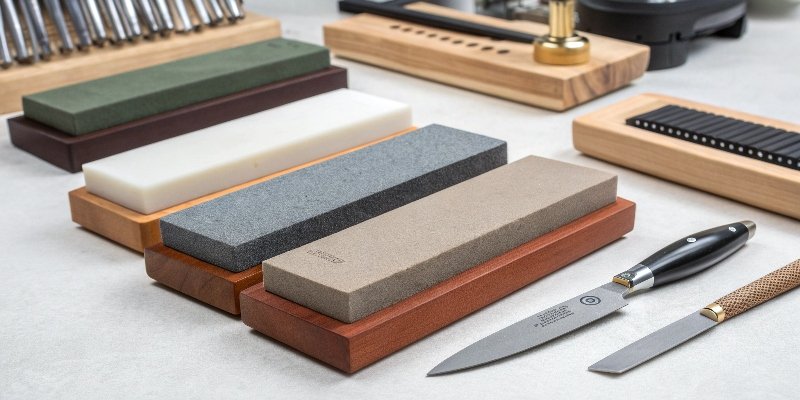
Choosing the right stone is your first step toward a perfectly sharp edge. But mastering the process requires a deeper understanding of the tools you are using. To get the best results, you need to know more about the types of stones, the meaning of grit numbers1, and how to match them to your specific knife. Let’s explore these details together so you can sharpen with confidence.
What’s the best stone for sharpening knives?
You want the "best" stone, but that term is subjective. Buying the wrong one for your needs wastes money and could even damage your high-quality knives. Let’s match the stone to the job.
For most steel kitchen and utility knives, a synthetic (Aluminum Oxide) whetstone is the best all-around choice. For extremely hard tool steels or ceramic blades, a diamond stone is superior because it cuts faster and more effectively.
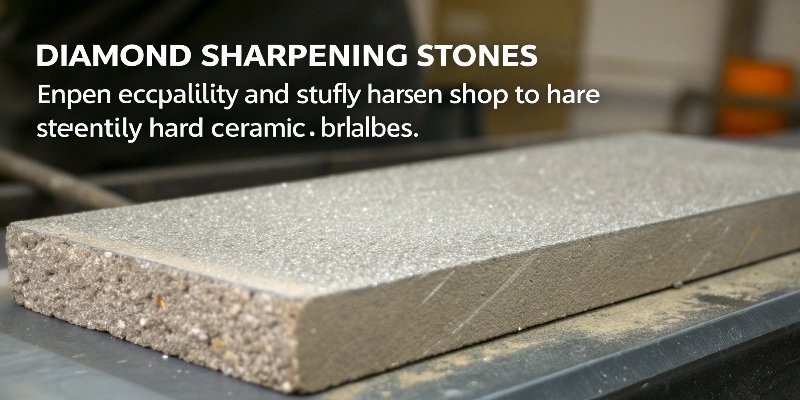
In my nearly three decades at our factory, Reliable, we’ve produced countless abrasive tools. This experience has taught me that the "best" material is always the one that fits the application perfectly. When it comes to sharpening stones2, there are three main categories to consider. Each has its place, and understanding them is key to making a smart purchase. We can break them down into synthetic stones3, diamond stone4s, and natural stones5.
Material Matters
The material of your stone dictates its cutting speed, longevity, and the type of knife it works best with.
-
Synthetic Whetstones: These are the most common and versatile stones, usually made from Aluminum Oxide or Silicon Carbide. They offer fantastic value and come in a very wide range of grits. They work by creating a slurry of abrasive particles and water, which sharpens the blade. They are my top recommendation for anyone from a home user to a professional workshop that needs consistent, reliable performance on standard steel knives.
-
Diamond Stones: These feature a metal plate coated with monocrystalline diamonds. They are the hardest and most aggressive sharpening material. They cut very fast, stay perfectly flat, and can sharpen anything, including ceramic blades and super-hard powdered steels that would wear out other stones. They are a bigger initial investment, but they last a very long time.
-
Natural Stones: Stones like the famous Arkansas stones are quarried from the earth. They are known for creating an incredibly fine, polished, and long-lasting edge. However, they are typically only used for final polishing (grits are usually #4000 and above) and work much slower than synthetic or diamond stones. They are a luxury for enthusiasts who want the absolute sharpest edge possible.
Here is a simple table to help you compare:
| Stone Type | Main Abrasive | Best For | Key Advantage |
|---|---|---|---|
| Synthetic Stone | Aluminum Oxide | Most steel knives | Best overall value and versatility |
| Diamond Stone | Industrial Diamonds | Hardened steels, ceramics | Fastest cutting, very durable |
| Natural Stone | Novaculite Quartz | Final polishing, fine edges | Creates a superior, keen edge |
Which grit is finer, 1000 or 6000?
Grit numbers on sharpening stones are confusing. Using a grit that is too coarse can wear away your blade unnecessarily, while using one that’s too fine won’t sharpen a dull knife.
Grit works just like sandpaper: the higher the number, the finer the abrasive particles. A #6000 grit stone is much finer than a #1000 grit stone. It removes less material and is used for polishing an already sharp edge to a mirror finish.
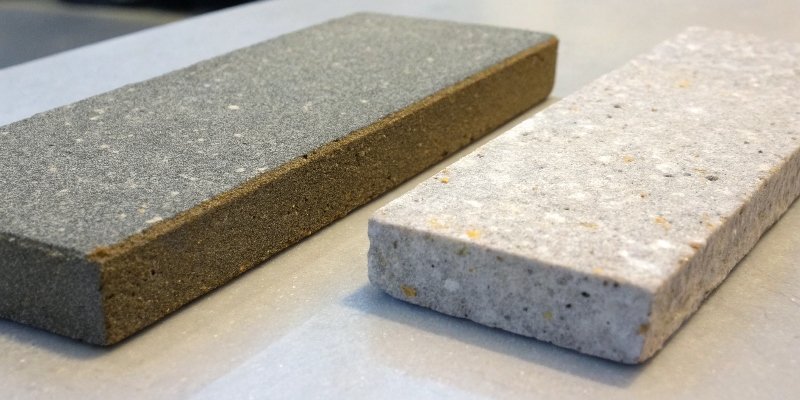
Understanding grit is probably the single most important factor in successful sharpening. Using the right grit at the right time saves you time and extends the life of your knives. Think of it as a sequence. You can’t just jump to the final step and expect good results. It’s a process of gradually refining the edge, moving from a coarser grit to a finer one. We can group these grits into clear categories to make it easier to understand their purpose.
The Grit Progression
Each grit range has a specific job in the sharpening process.
-
Coarse Grits (#100 – #400): This is the heavy-lifting stage. You should only use these stones when you need to do major repair work. If your knife has chips on the edge or if the tip is broken, a coarse stone will remove metal quickly to reshape the blade and establish a new bevel. Using this for regular sharpening is overkill.
-
Medium Grits (#800 – #1500): This is your workhorse range. A #1000 grit stone is the most common and essential stone for any sharpener. It has enough cutting power to sharpen a moderately dull knife in a reasonable amount of time but is fine enough that it doesn’t remove too much steel. If you only have one stone, it should be in this range.
-
Fine Grits (#3000 – #8000+): This is the finishing stage. After you have sharpened your knife on a medium stone, a fine stone refines that edge, removing the microscopic scratches left behind. This process, often called honing6 or polishing, results in a sharper, smoother, and more durable edge. A #3000 grit provides a great working edge, while #6000 or #8000 grits will create a mirror polish for ultimate sharpness.
| Grit Range | Name | Primary Use |
|---|---|---|
| #100 – #400 | Coarse | Repairing chipped or broken blades |
| #800 – #1500 | Medium | Sharpening dull knives, general maintenance |
| #3000 – #8000+ | Fine/Polishing | Honing, refining, and polishing the edge |
How do I know what sharpening stone to use?
You have a dull knife and several stones in front of you. You might still feel unsure about where to begin. Starting with the wrong stone can waste your time or even damage the blade.
First, inspect your knife’s edge. If it’s chipped or very damaged, start with a coarse stone (#400). If it’s just dull but intact, begin with a medium stone (#1000). If it’s already sharp and you just want a razor finish, use a fine stone (#3000+).
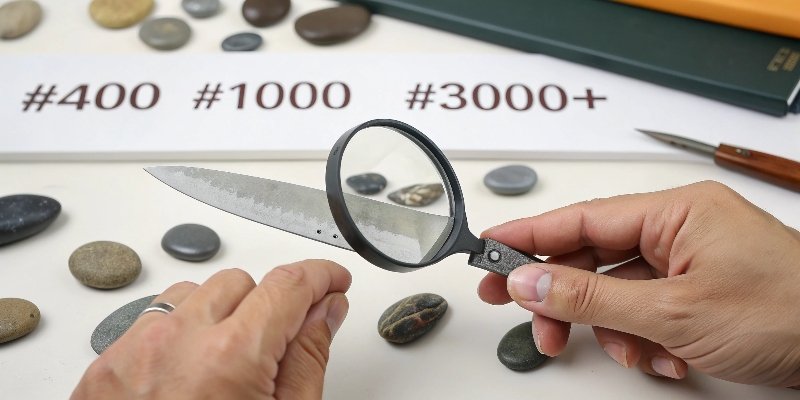
Making the right choice is a simple, three-step process. In our business, we always guide our B2B clients through a similar needs analysis to ensure they get the right abrasive product for their manufacturing line. You can apply the same industrial logic to your own knives. It’s all about assessing the starting point, knowing the material you’re working with, and defining your desired outcome. By answering these three simple questions, you can create a clear plan every single time you sharpen.
A Three-Step Selection Process
Follow these steps to choose the right stone every time.
-
Assess the Blade’s Condition: Look closely at the cutting edge. Is it smooth but won’t cut paper? It’s just dull. Can you see nicks, chips, or a bent, rolled edge? It’s damaged. This initial assessment immediately tells you if you need to start with a coarse repair stone or a medium sharpening stone.
-
Consider the Knife’s Steel: What kind of knife is it? A standard German kitchen knife is made of relatively soft steel and sharpens easily on a synthetic whetstone. A high-end Japanese knife made of a very hard "super steel" might sharpen faster on a diamond stone. A ceramic knife can only be sharpened with a diamond stone.
-
Define Your Sharpening Goal: What do you want to achieve? Are you just looking to get a functional, sharp edge for chopping vegetables? A #1000 grit stone followed by a #3000 grit will be perfect. Do you need a surgically sharp edge for precise slicing? Then you’ll want to progress up to a #6000 or #8000 grit stone for a polished, razor-like finish.
| Blade Condition | Knife Type | Desired Finish | Starting Grit |
|---|---|---|---|
| Damaged/Chipped | Any Steel | Functional | #240 – #400 |
| Dull | Standard Steel | Sharp | #1000 |
| Dull | Hard Steel/Ceramic | Sharp | Diamond Stone |
| Already Sharp | Any Steel | Razor Polish | #3000 – #6000 |
How do I know if my knife is 15 or 20 degrees?
The sharpening angle is critical for performance. Using the wrong angle will produce a weak edge or, even worse, make your knife duller than when you started. But angles can be hard to judge.
Generally, European and American knives (like Wüsthof or Henckels) use a 20-degree angle per side for durability. Japanese knives (like Shun or Global) often use a sharper 15-degree angle for precision. You can confirm with the manufacturer or use the "Sharpie trick" to find the exact angle.
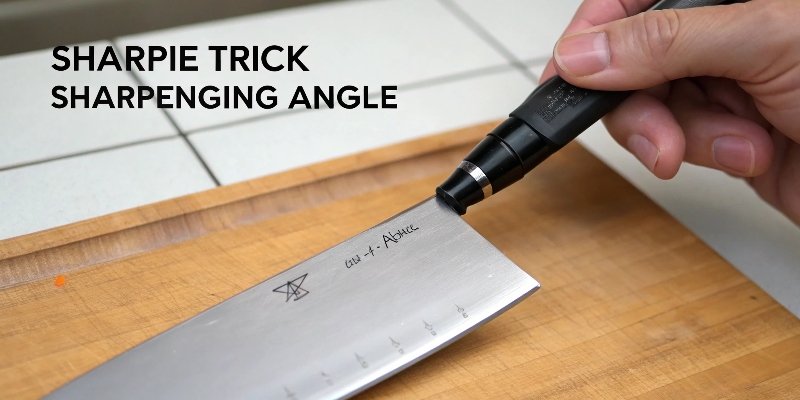
Maintaining a consistent angle is the hardest part of freehand sharpening, but it’s not impossible. I have seen countless workers in our partner factories develop a feel for it over time. Before you can develop that muscle memory, you first need to identify the correct angle for your specific knife. The angle represents a trade-off: a smaller angle (15 degrees) is sharper but more fragile, while a larger angle (20 degrees) is more durable but feels less sharp. Finding and matching the existing angle set by the manufacturer is almost always the best approach.
Two Simple Methods to Find Your Angle
Here are two easy ways to determine the correct angle for your knife.
1. The Visual Estimation Guide
You can use simple objects to get a feel for the angle. For many people, this physical reference is enough to get started.
- 20-Degree Angle: This is roughly the angle of a standard book of matches stood on its side. Place the spine of your knife on the stone and tilt it up until the gap between the spine and the stone is about the thickness of that matchbook. This is a good starting point for most Western-style knives.
- 15-Degree Angle: This angle is a bit lower and harder to judge. It’s about the thickness of two credit cards stacked together. This is the angle you want for most Japanese-style knives.
2. The Foolproof Sharpie Trick
This is the most reliable method, and the one I recommend to everyone. It removes all the guesswork.
- Take a permanent marker (like a Sharpie) and color the entire cutting edge bevel on both sides of the knife.
- Let the ink dry for a moment.
- Place the knife on the sharpening stone at the angle you think is correct.
- Make one or two gentle passes along the stone, maintaining that angle.
- Now, look at the ink on the bevel.
- If only the ink at the very bottom of the edge is removed, your angle is too low (too flat).
- If only the ink at the top "shoulder" of the bevel is removed, your angle is too high (too steep).
- If all the ink is evenly removed from the entire bevel, you have found the perfect angle. Adjust your angle and repeat until the ink is removed evenly.
Conclusion
Choosing the right stone and angle is key to a sharp knife. Start with a quality medium-grit stone, find your angle, and focus on consistency. Practice makes a perfect edge.
-
Understanding grit numbers is crucial for effective knife sharpening; discover how they impact the process. ↩
-
Explore the various types of sharpening stones to find the best fit for your knife and sharpening needs. ↩
-
Find out what synthetic stones are made of and why they are popular for knife sharpening. ↩
-
Explore the benefits of diamond stones for sharpening hard steels and ceramics effectively. ↩
-
Discover the unique qualities of natural stones and their role in achieving a fine edge. ↩
-
Discover the importance of honing in the knife sharpening process for maintaining a sharp edge. ↩
Written by
leeon
You may also be interested in:
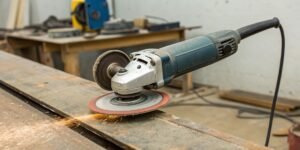
What is an angle grinder?
Are you confused by this powerful, versatile tool? You see it everywhere but are not sure what it does or if you need one. Getting
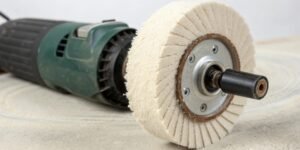
What is a buffing wheel used for?
Dull, scratched surfaces can ruin your products. This costs time and money. A buffing wheel is your tool to restore that perfect, professional finish everyone
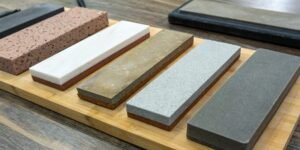
What is the best type of sharpening stone for kitchen knives?
Your kitchen knives are getting dull, making simple tasks like slicing a tomato a frustrating chore. A dull knife is a dangerous knife, but choosing

What belt grinder should a (beginner) knife maker own?
Starting knife making is exciting, but choosing the right grinder is overwhelming. The wrong one ruins projects and wastes money. This guide simplifies picking the

How do you cut welds with a grinder?
You have a rough weld that needs removing, but you’re worried about damaging the metal or getting hurt. Using an angle grinder correctly is the

Can I put a circular saw blade on a grinder?
You need to make a quick cut, and your angle grinder is right there. It’s tempting to try and fit a saw blade on it.
